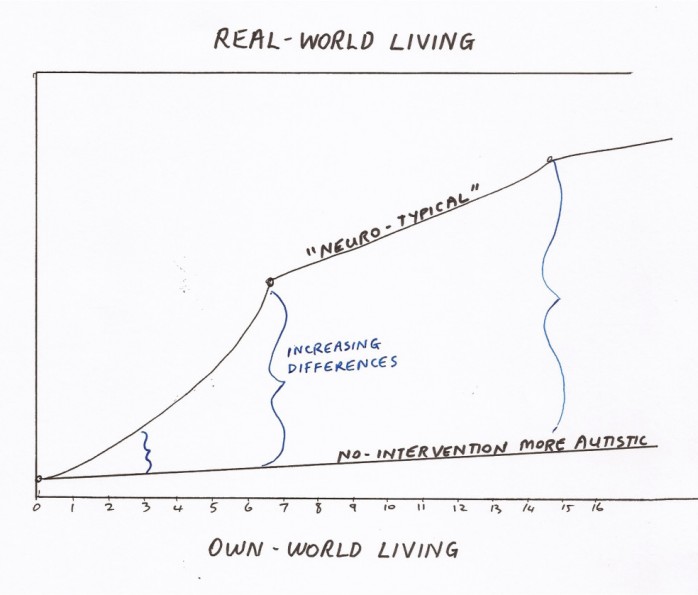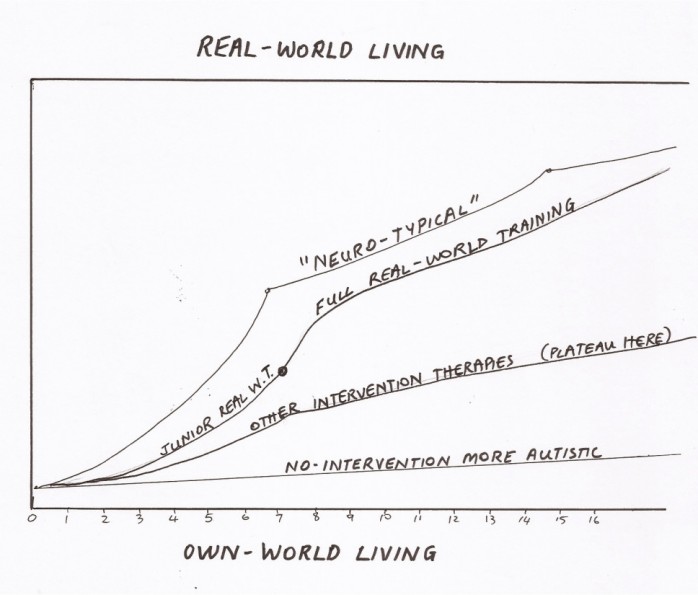Over Time, autism can get Worse (more entrenched)
or Better (less-of-a-hold).
But if you make small daily improvements in whatever you do, then over the years you will arrive at a completely different, more desirable destination. Conversely, small detriments can turn into big detriments over time.
“Real-World” Training aims to set your Child in motion in the right directions, which having been set do not require constant monitoring and teaching. In fact the aim is to get the Child to want to “Own” the Training, so he.she becomes basically self-motivated to keep entering the Real World when possible, and to gain the Rewards which, via the Training, you have made more tangible.As an example, I only infrequently discuss the concepts of Own and Real World with my son, now 13, (in 2013). He knows the distinction between the two Worlds, and I can see him formulating his own mixture of the two, with the aim of increasing the Real World component when possible.
He is self-motivated and his direction is plain.
Chart (1) below describes the Real and Own World mix that we all use:
The frame shows Real-World-Living at the top, Own-World-Living at the bottom. The ascending line shows the average of the amount of time spent in each World, at various ages, for example the first dot shows almost entirely Own World Living as a baby. Later on, the highlighted dot at around age 6 shows where you would be if you spent half your time in the Real World and half in Own, equidistant between the two Worlds.

Chart (2) below shows the increasing divergence of two orientations over time. The thing to note is that while the lines both head upwards towards more Real World Living (because your Child does get more Real-World aware too) the difference between them becomes greater:


You might notice that the “Real-World” Training line at the age of around 8 takes an upward-bump and heads more sharply towards the “neurotypical” line. How come?